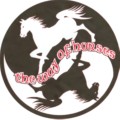
THE WAY OF HORSES |


Copyright © thewayofhorses
Eleanor
Richards |
INTERPRETING
FEED
TAGS By Eleanor Richards Copyright © 2004 |
MINERALS My horse eats dirt! There are many reasons horses will eat dirt. Boredom and lack of forage are two examples. But, the main reason most horses eat dirt is for the minerals. Minerals are not manufactured in the body or in the plants horses eat. Yes, there are minerals in bodies and plants, but they are not produced within the system. Minerals come from the soil. Plants absorb minerals from the soil. Your horse then eats those plants (forage and grain)... or your horse cuts out the middleman and just eats the dirt. The problem is the soil varies in mineral content. Different geographical regions have different minerals in the soil. Some regions have too much or too little. Another problem is many of our horses are kept confined in a stall. These horses never have a chance to obtain minerals the natural way (by eating dirt or visiting the local natural salt lick). Our horses depend on us to provide the needed minerals. We do this by providing a good quality concentrate, offering free choice loose salt and - in some extreme cases - feeding a mineral supplement. Minerals interact with other minerals. One mineral may interfere with the absorption of other minerals. Extreme caution must be observed when supplementing with minerals. Imbalances and toxic levels are very possible. Look at your feed tag. There should be four minerals listed: calcium, phosphorus, copper and zinc. There might be others, but these four are required by the Association of American Feed Control Officials. The calcium and phosphorus levels must be in the correct ratio. 1 to 1 ½ parts calcium to 1 part phosphorus is the ratio desired. Formulas for mature horses should contain about 0.70% calcium and 0.45% phosphorus. Feeds for growing horses and pregnant broodmares can be as high as 1% calcium and 0.65% phosphorus. Copper and zinc are stated in parts per million (ppm). They are needed in very small amounts. The copper amount could be as low as 35 ppm or as high as 55 ppm. Premium feeds designed for pregnant broodmares should have the higher amounts. Copper is very important to the developing fetus. Zinc amounts will vary also. Some feeds might contain 140 ppm or have as much as 220 ppm. Selenium is a very important mineral. It is deficient in many parts of the country. But, it is not required to be stated on the feed tag - though most companies do include it. The amount will vary from product to product. The average amount supplied will be approximately 0.3 ppm to 0.6 ppm. Once again, the formulas for pregnant broodmares should contain the higher amount. I cannot stress enough the care that must be taken when offering mineral supplements. Unless you are working under the supervision of a veterinarian it is recommended to feed plenty of good quality forage, a commercial feed designed to compliment that forage and is designed for the age and work level of your horse. Also, make sure your horse has access to free choice loose white salt and fresh clean water. Click here to read the next column: Feed Tag - Vitamins |